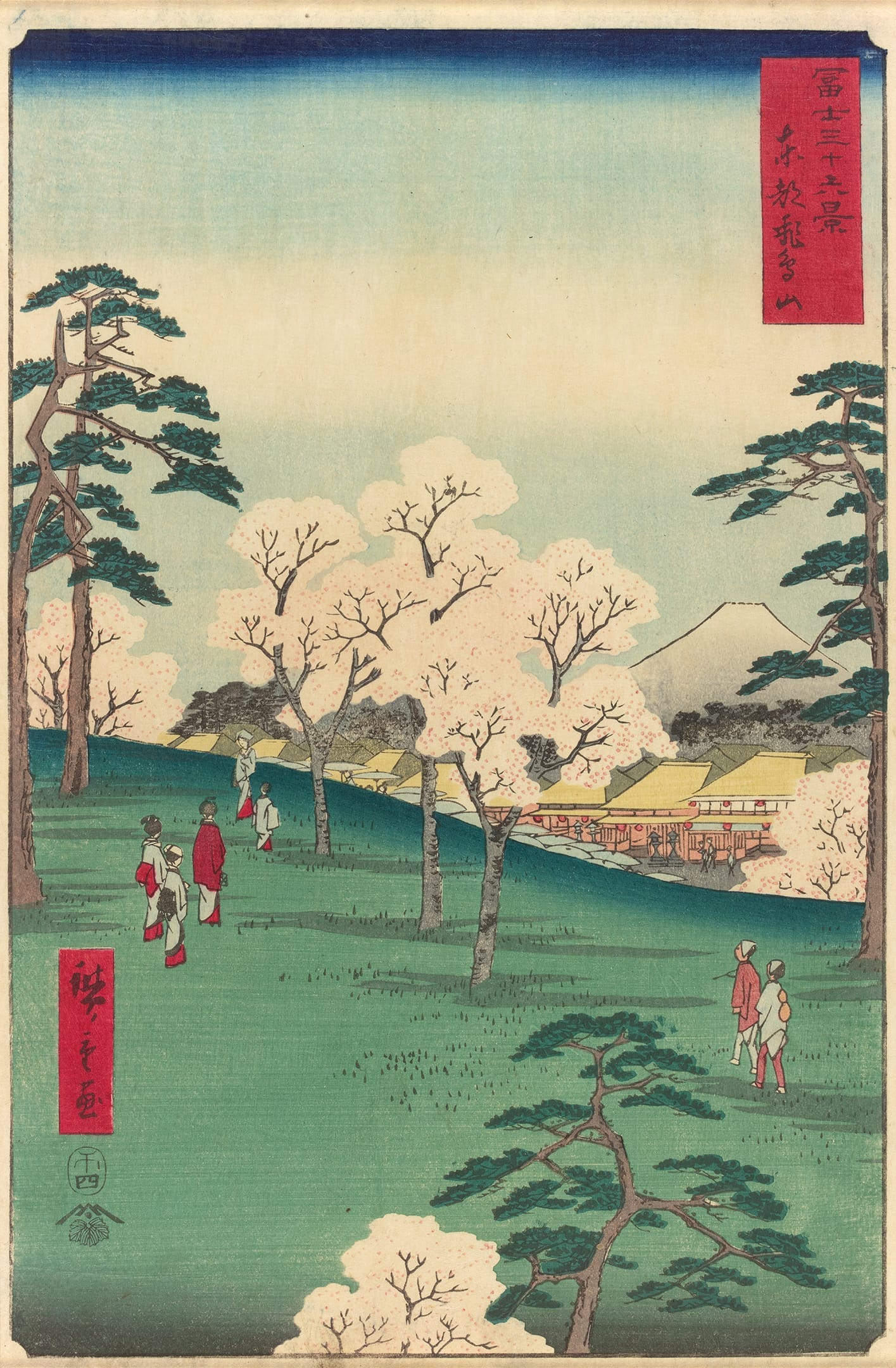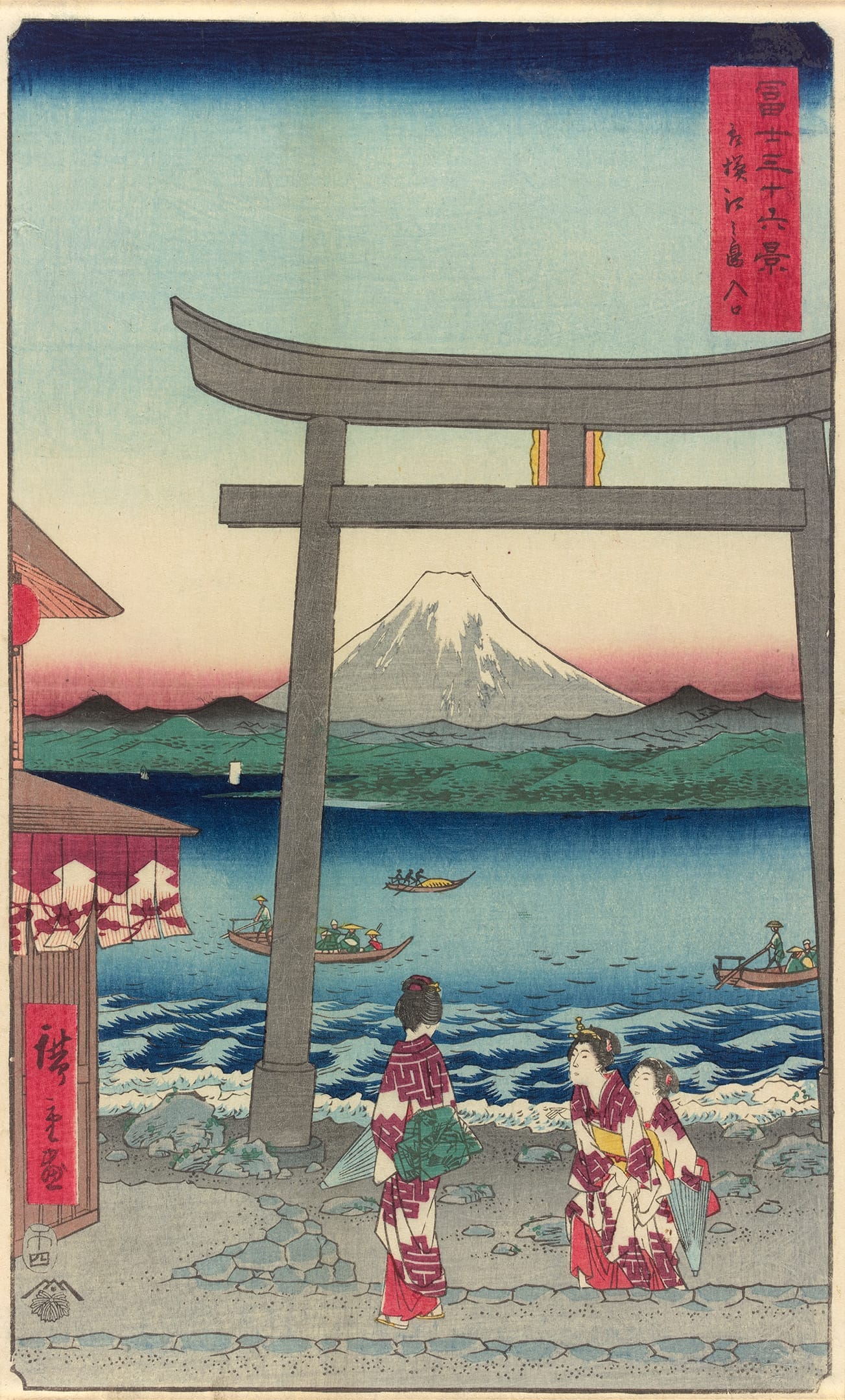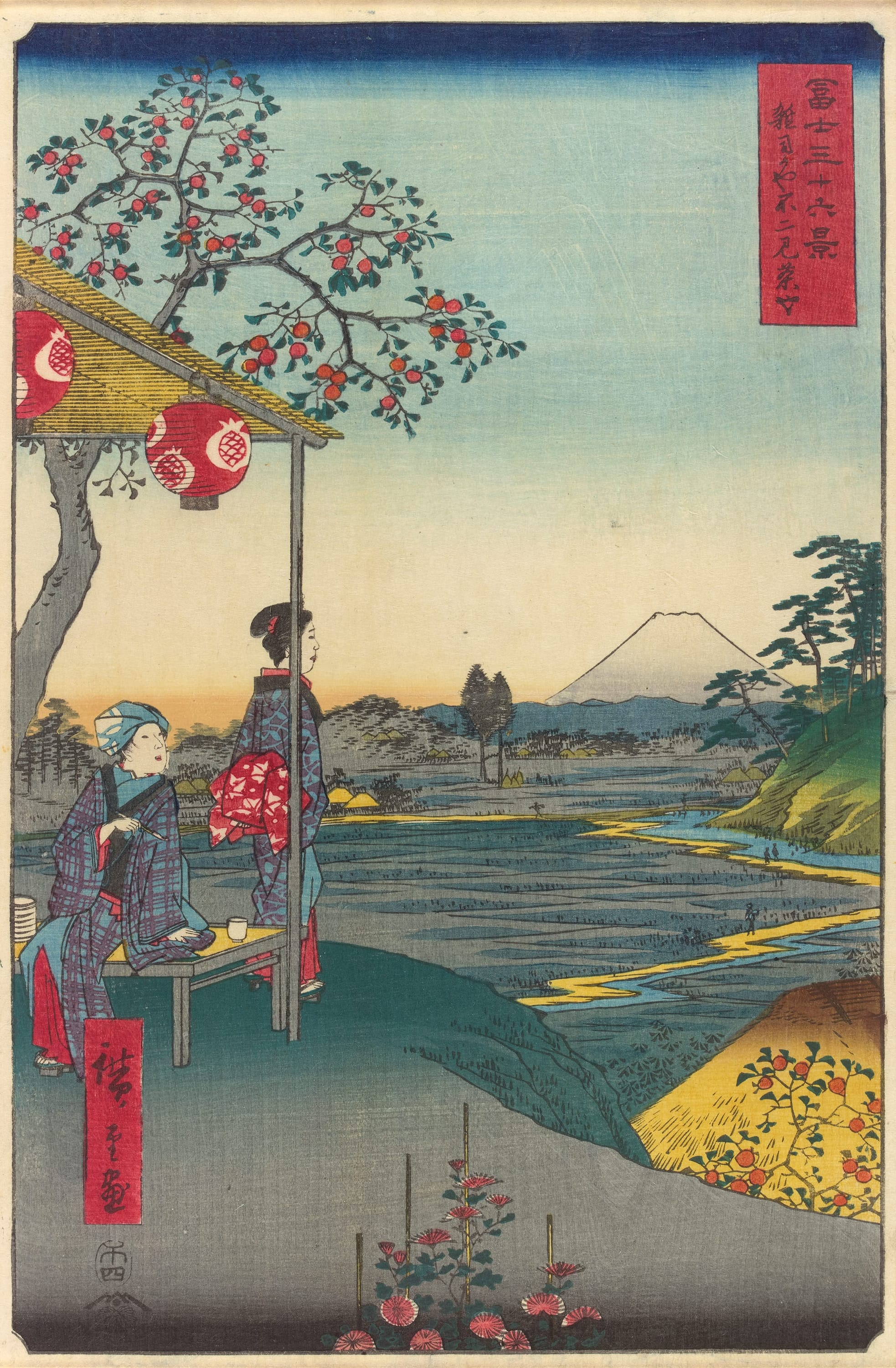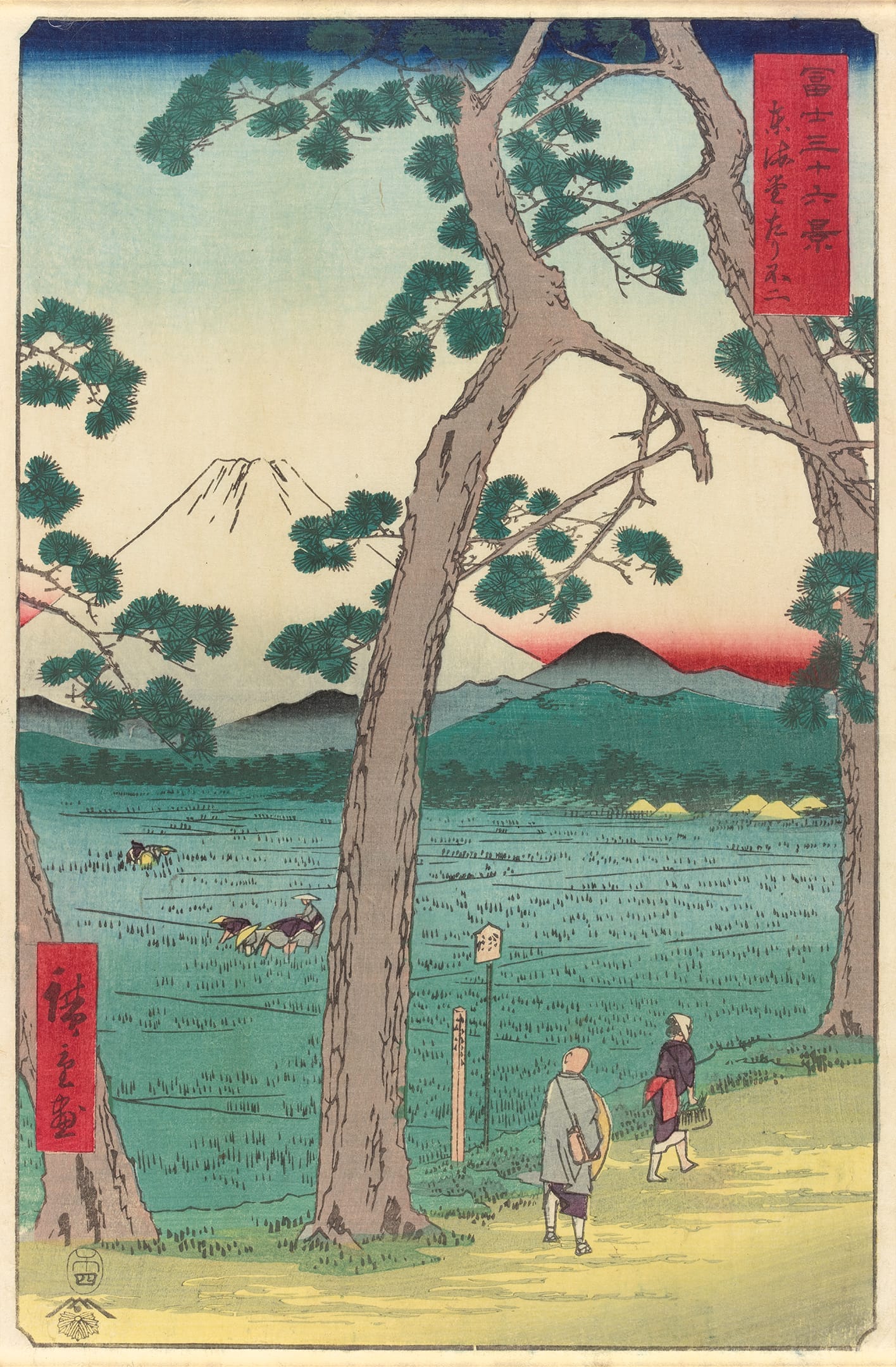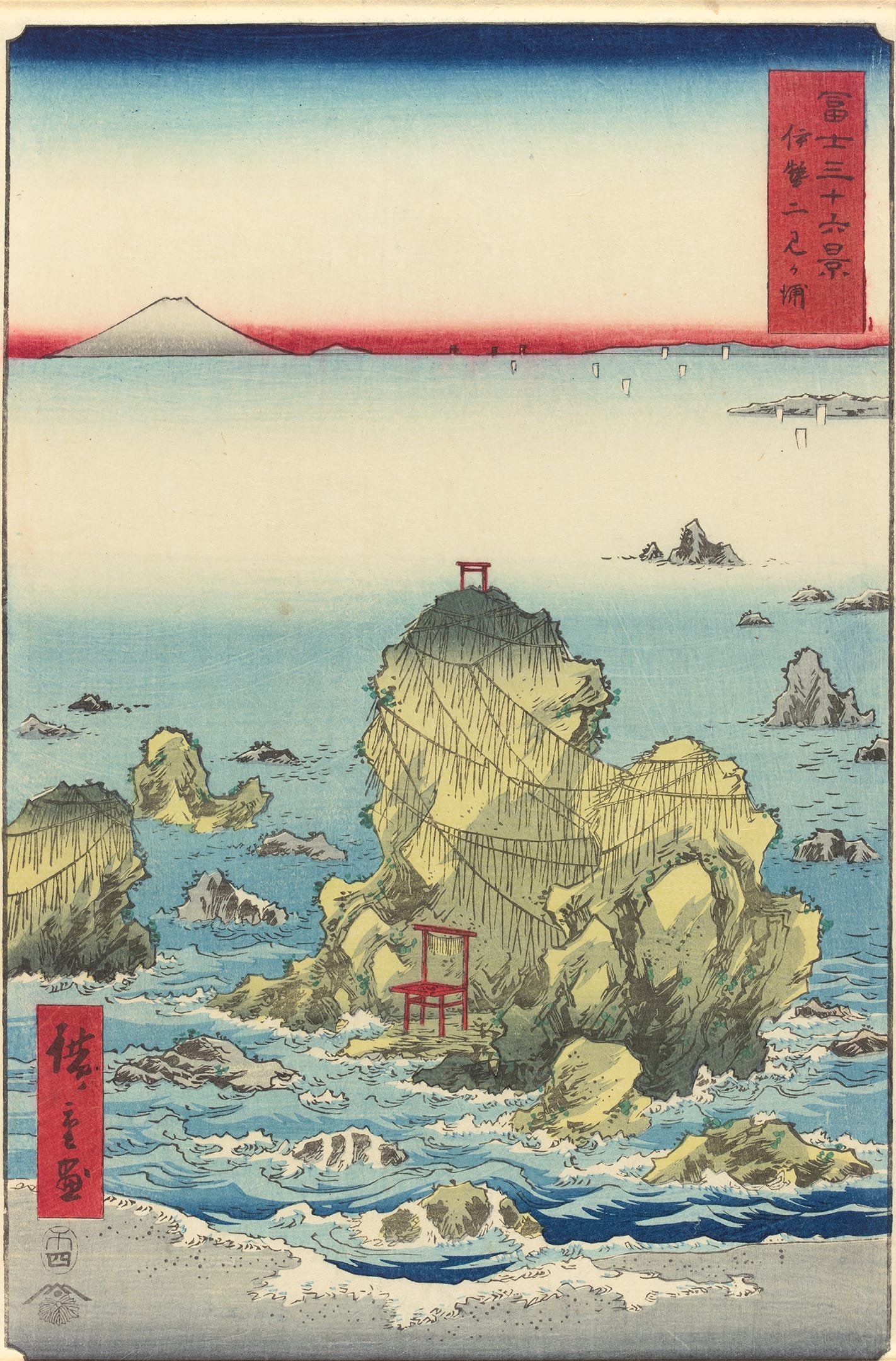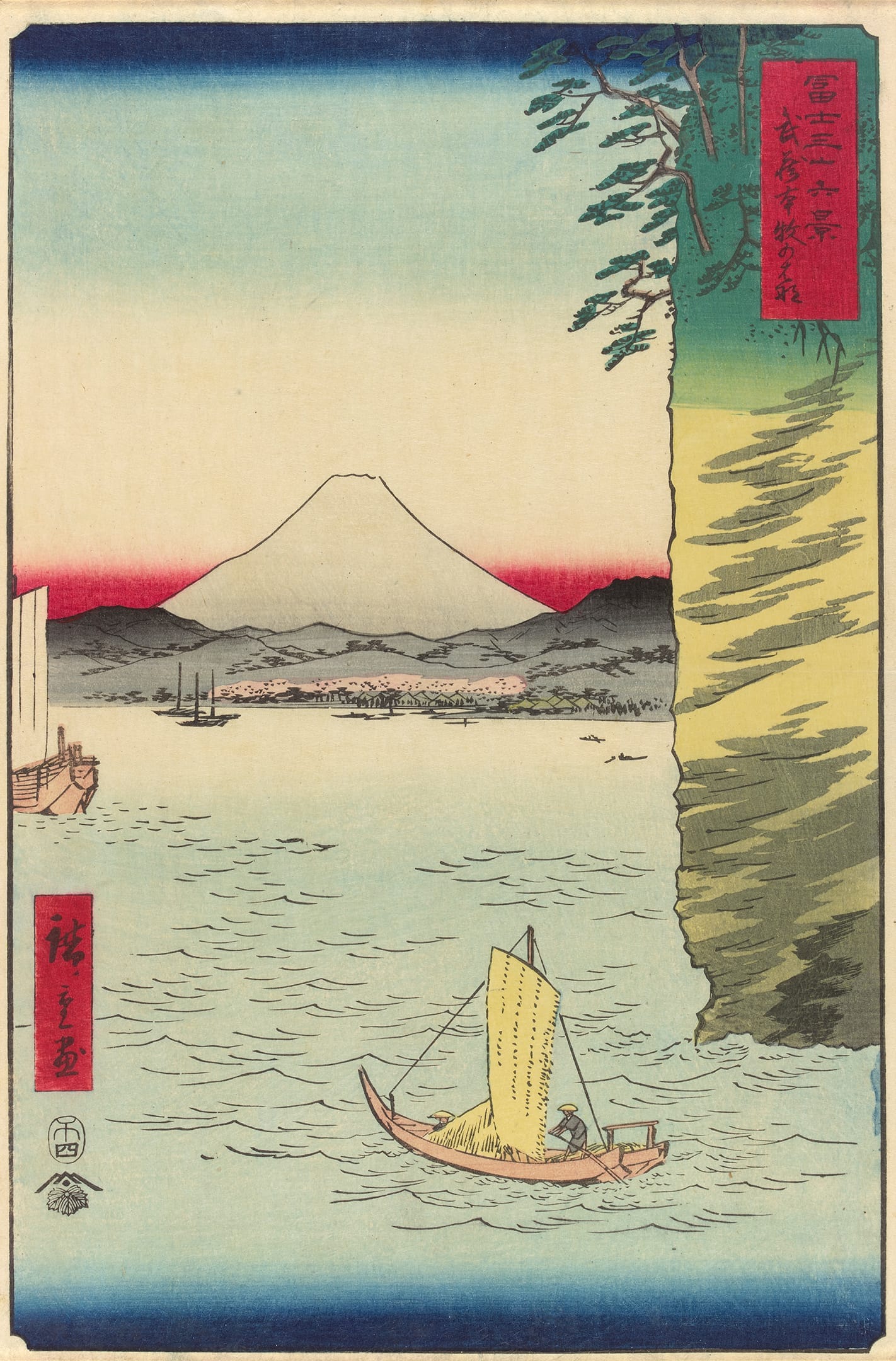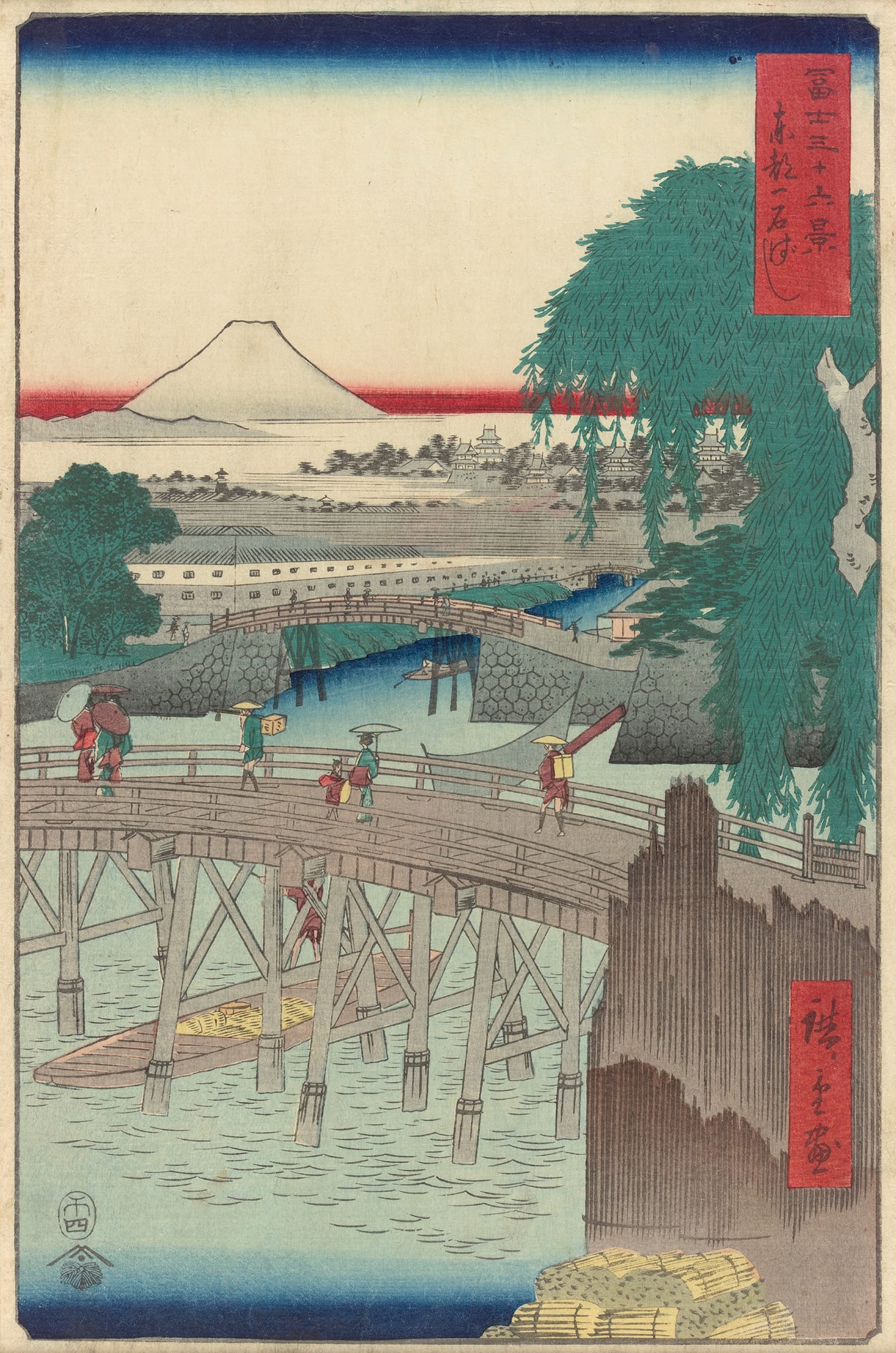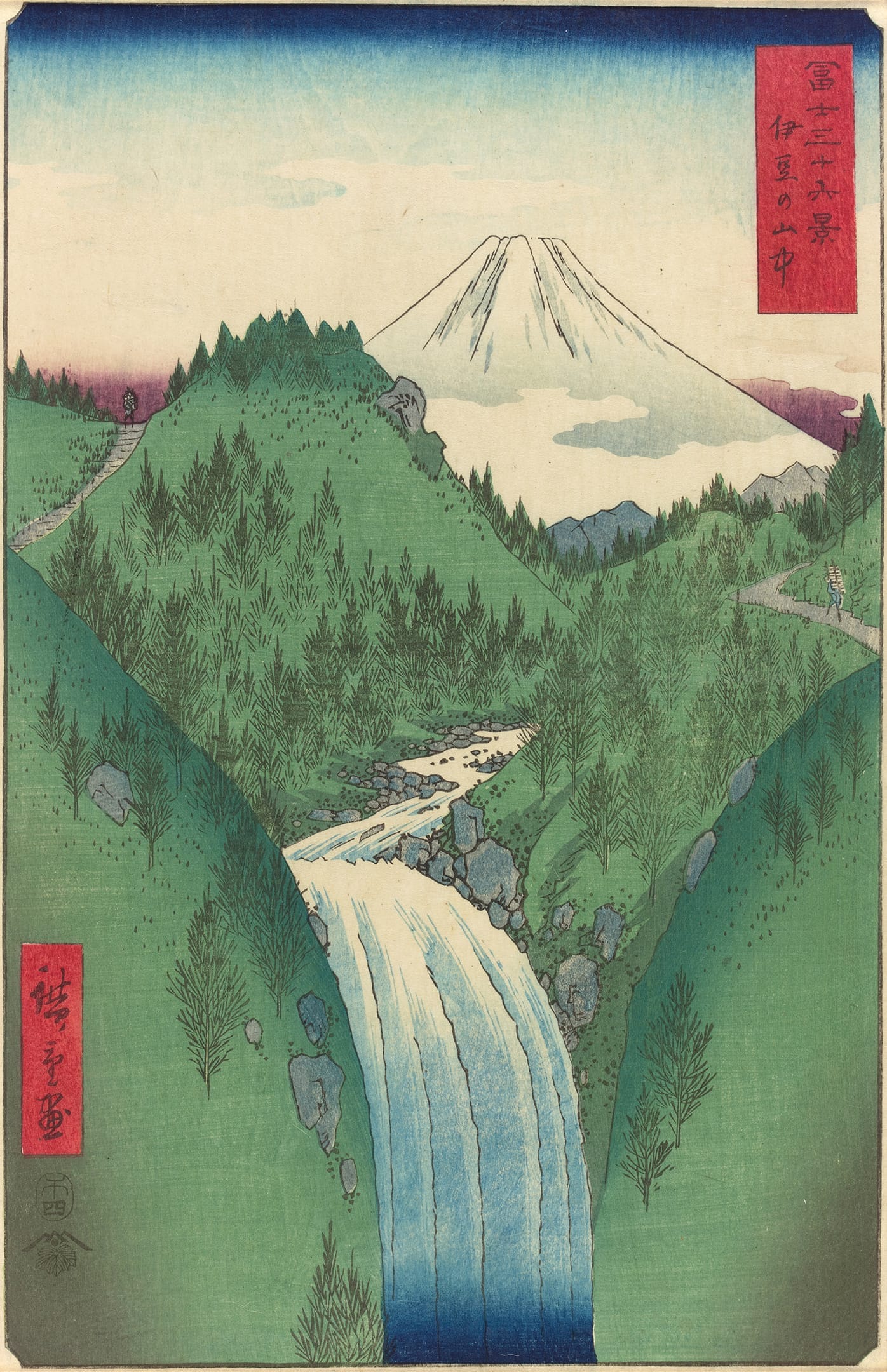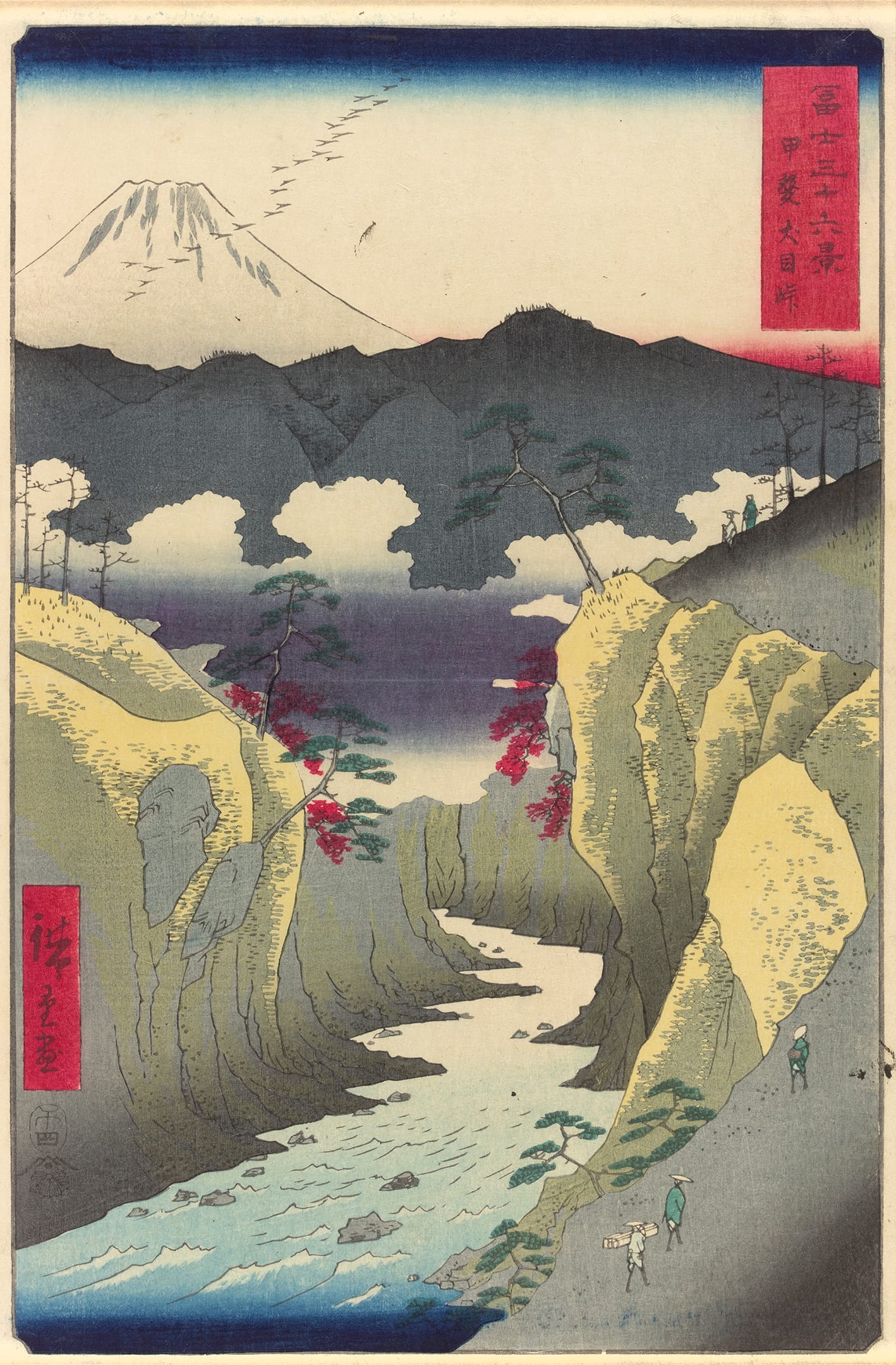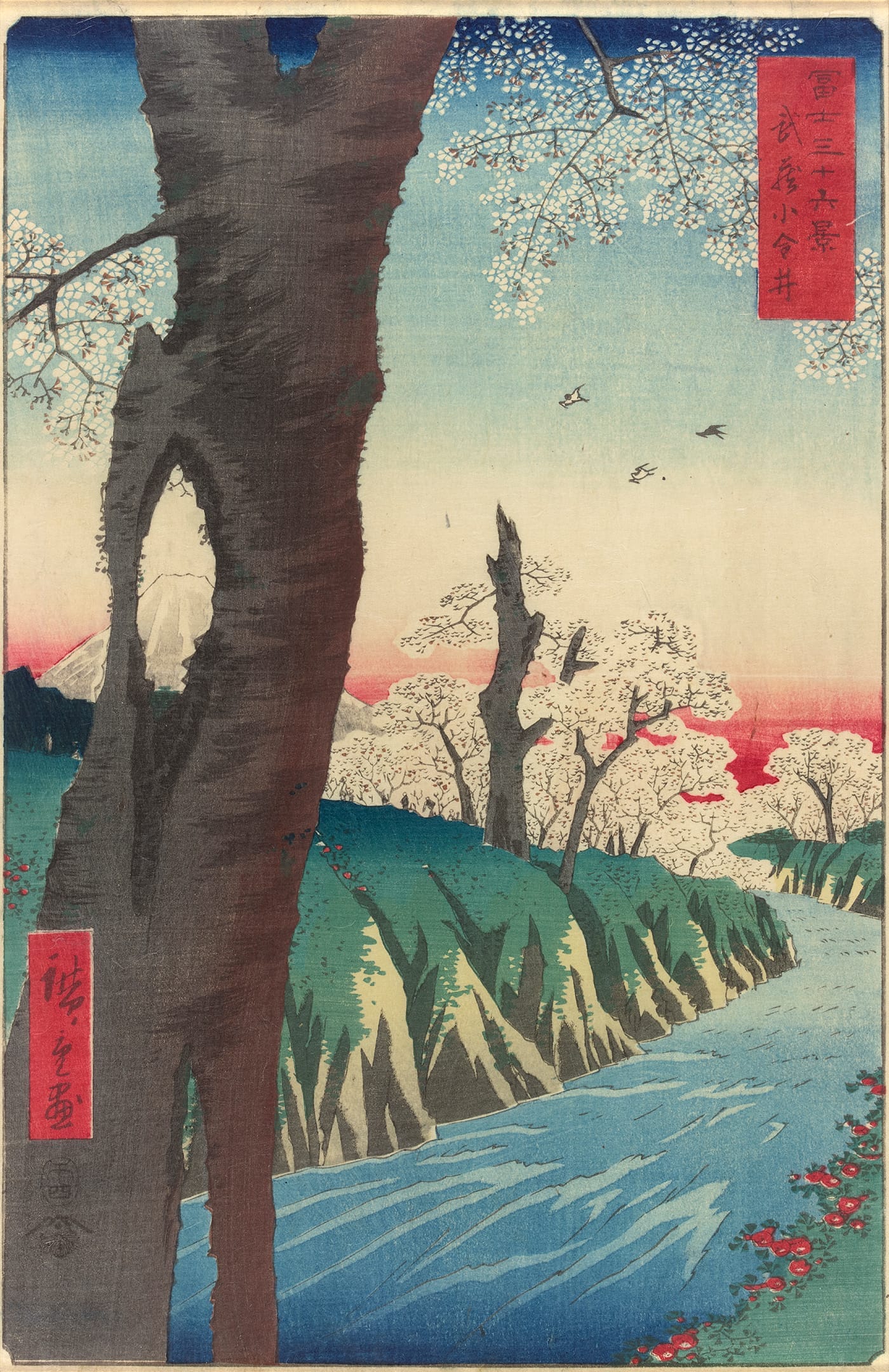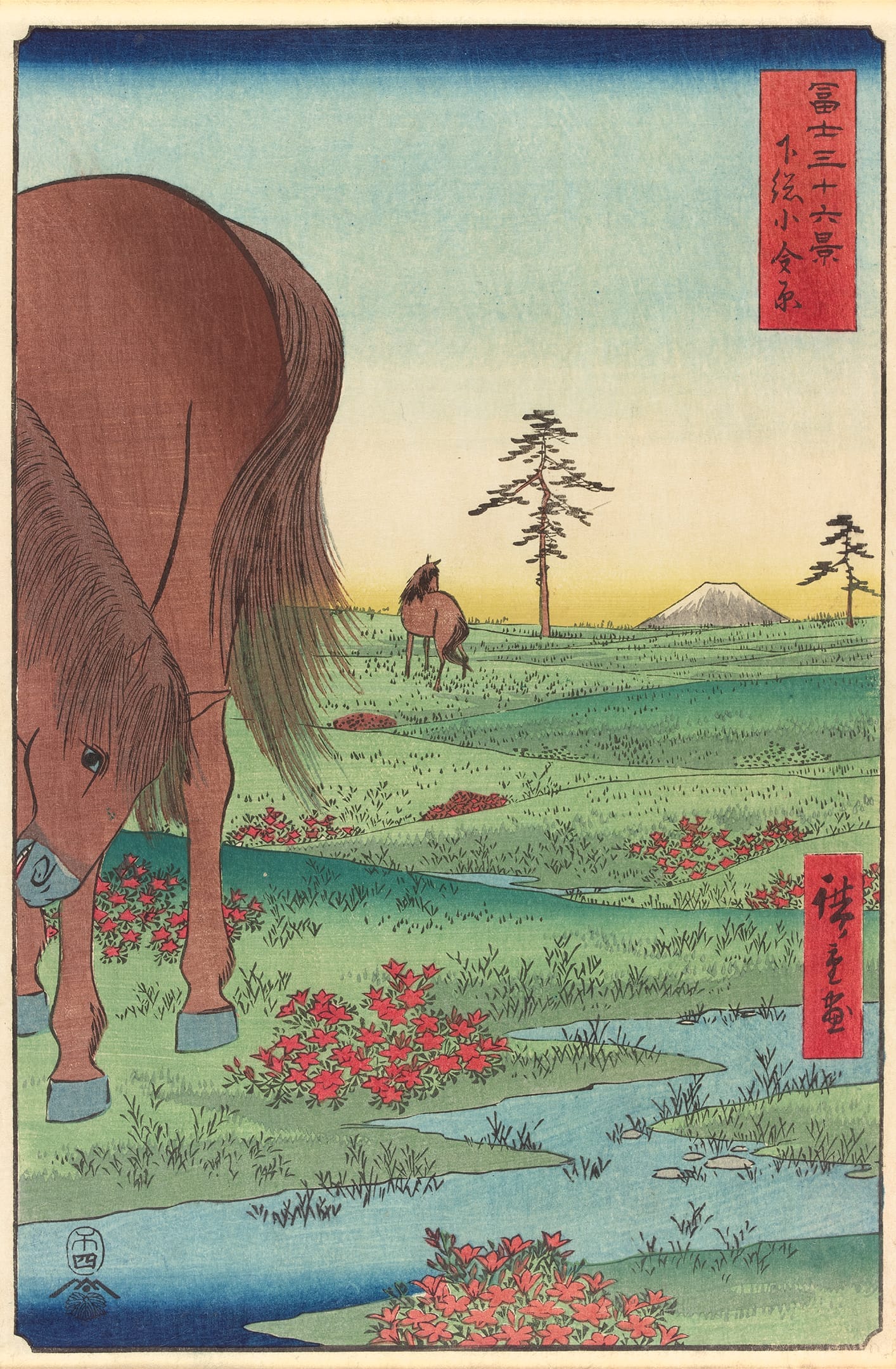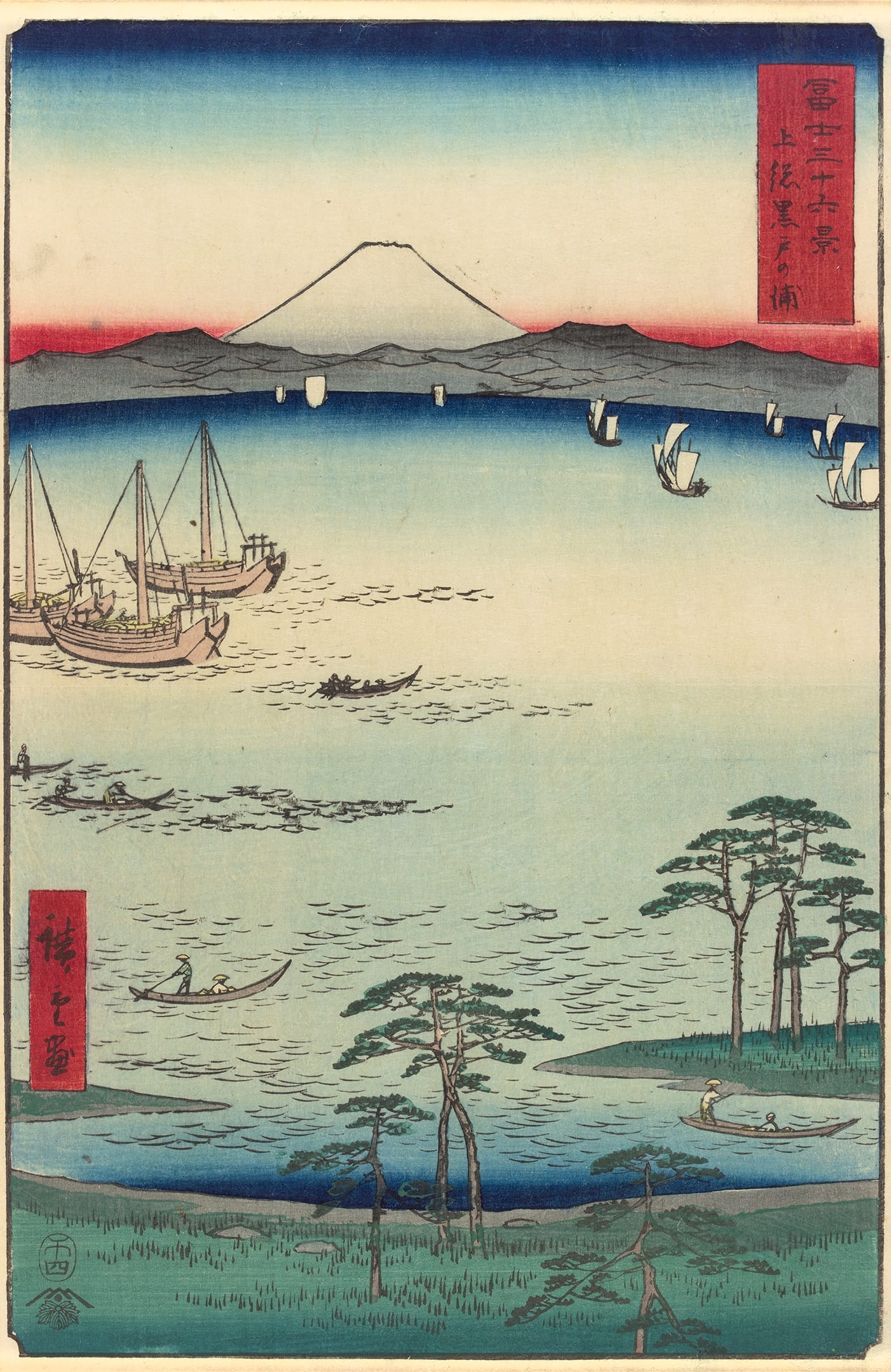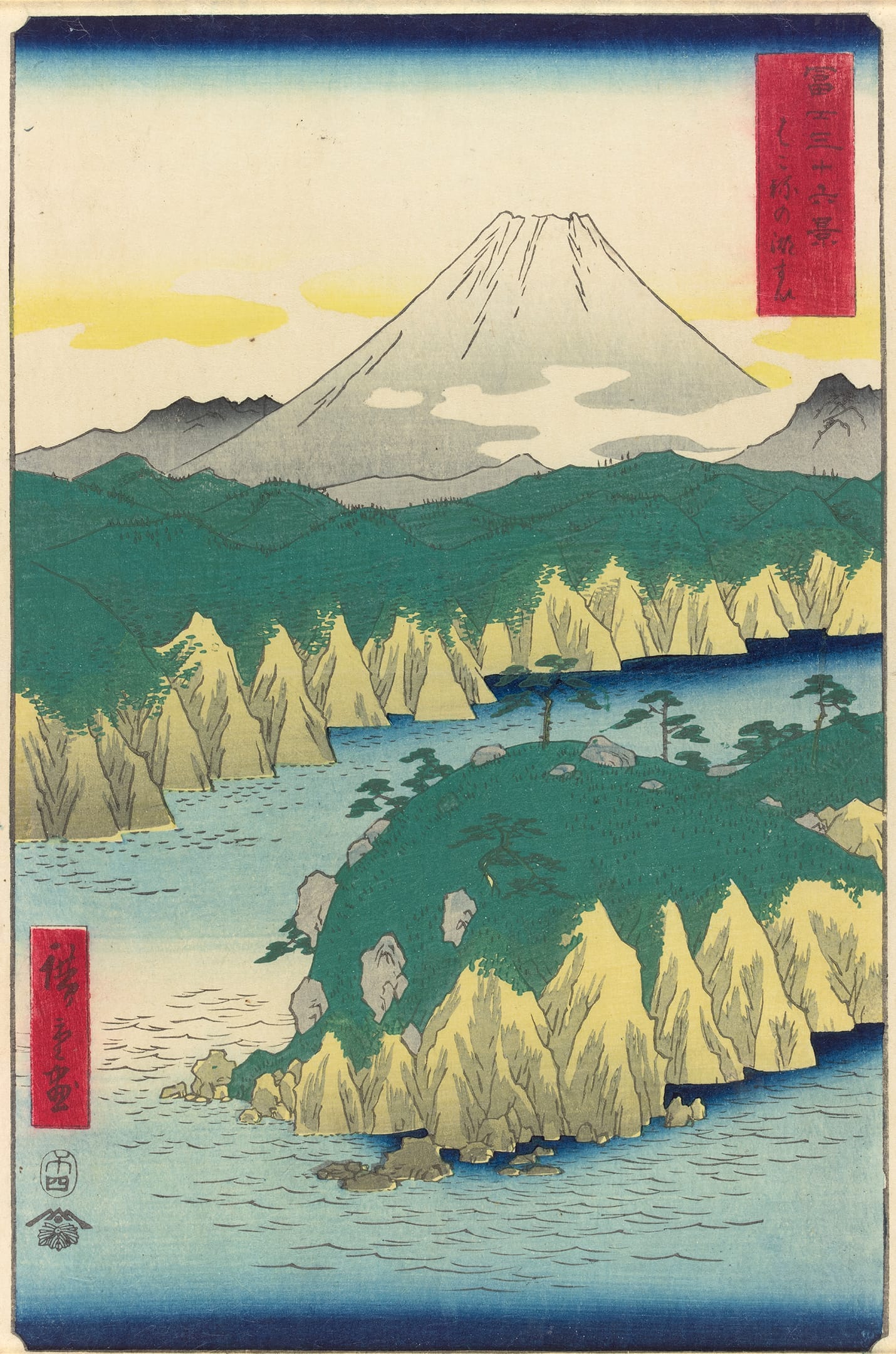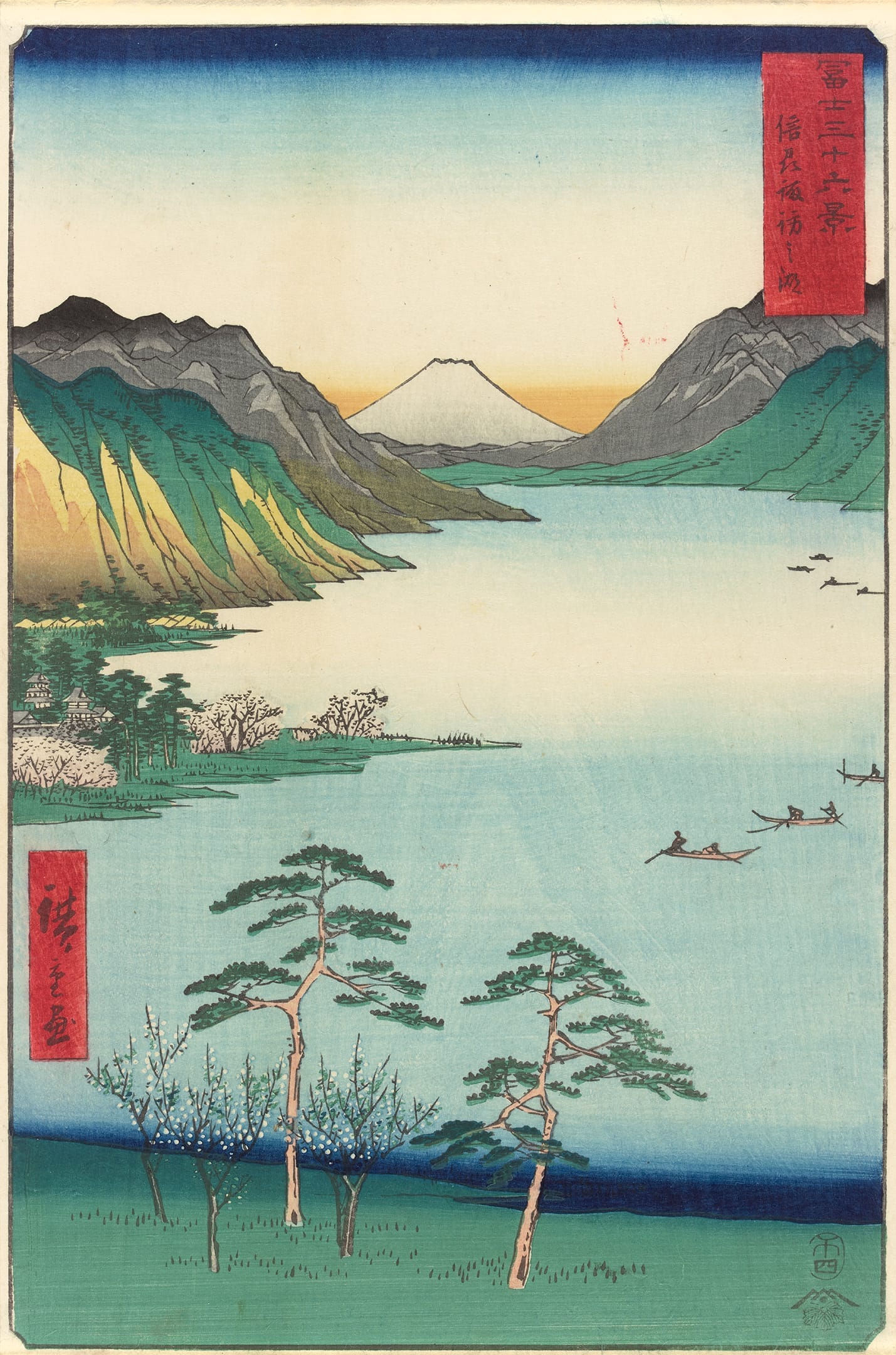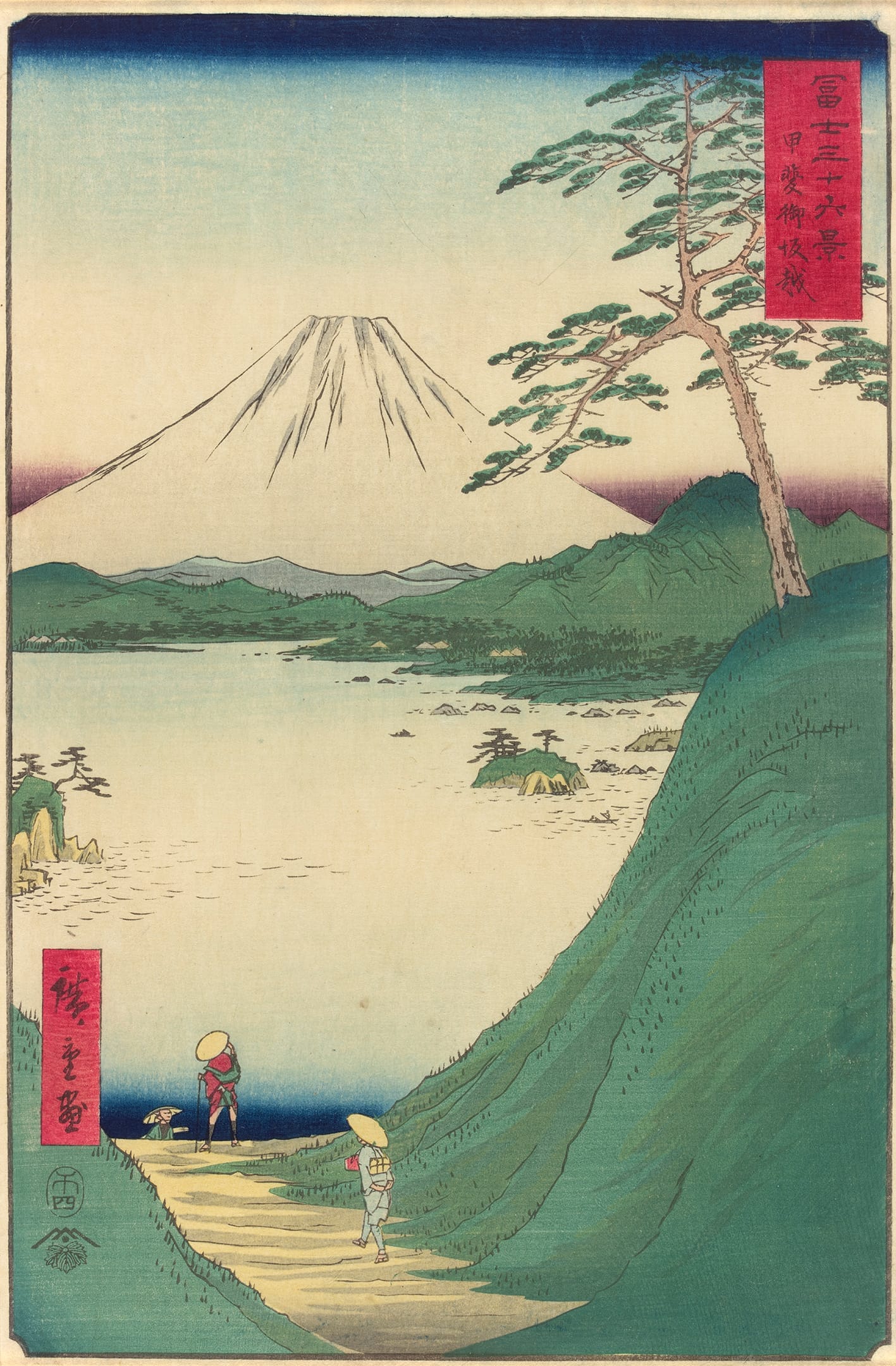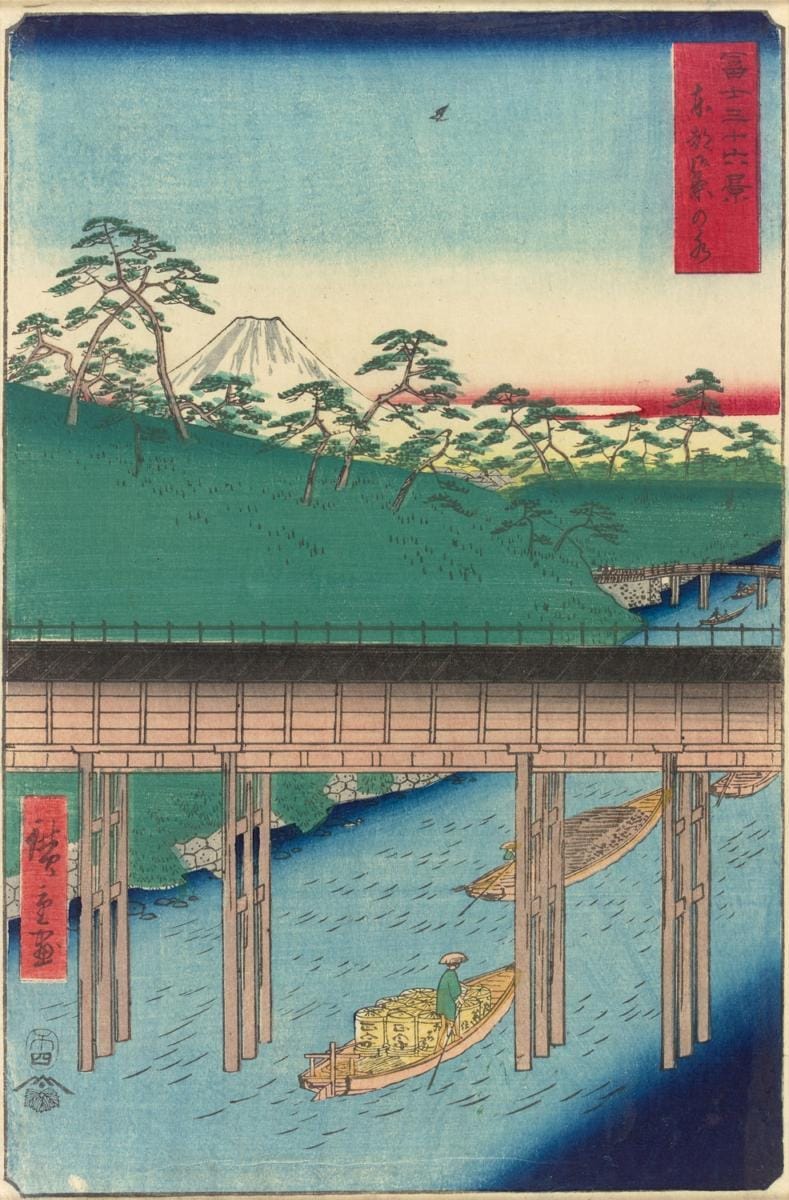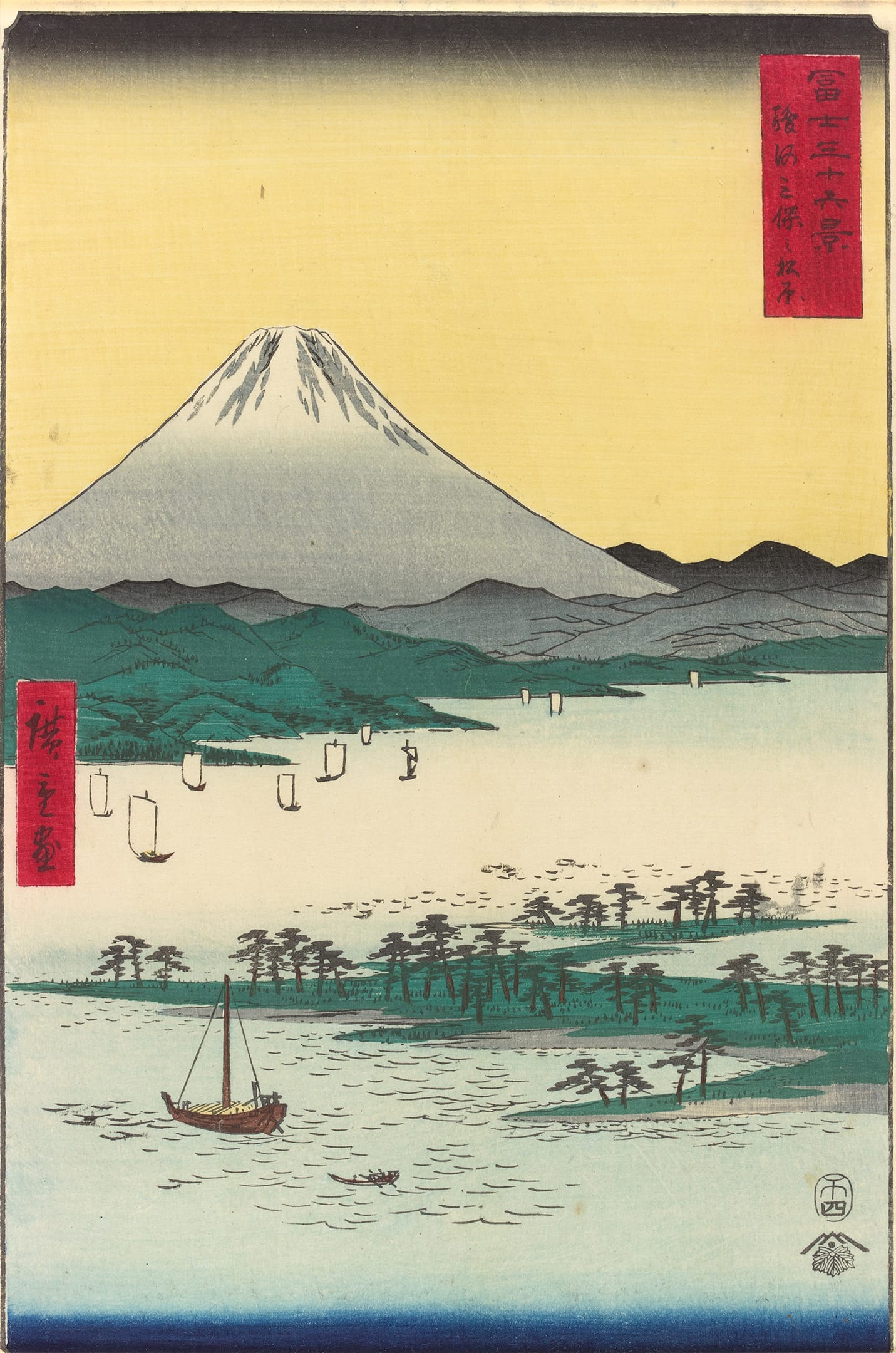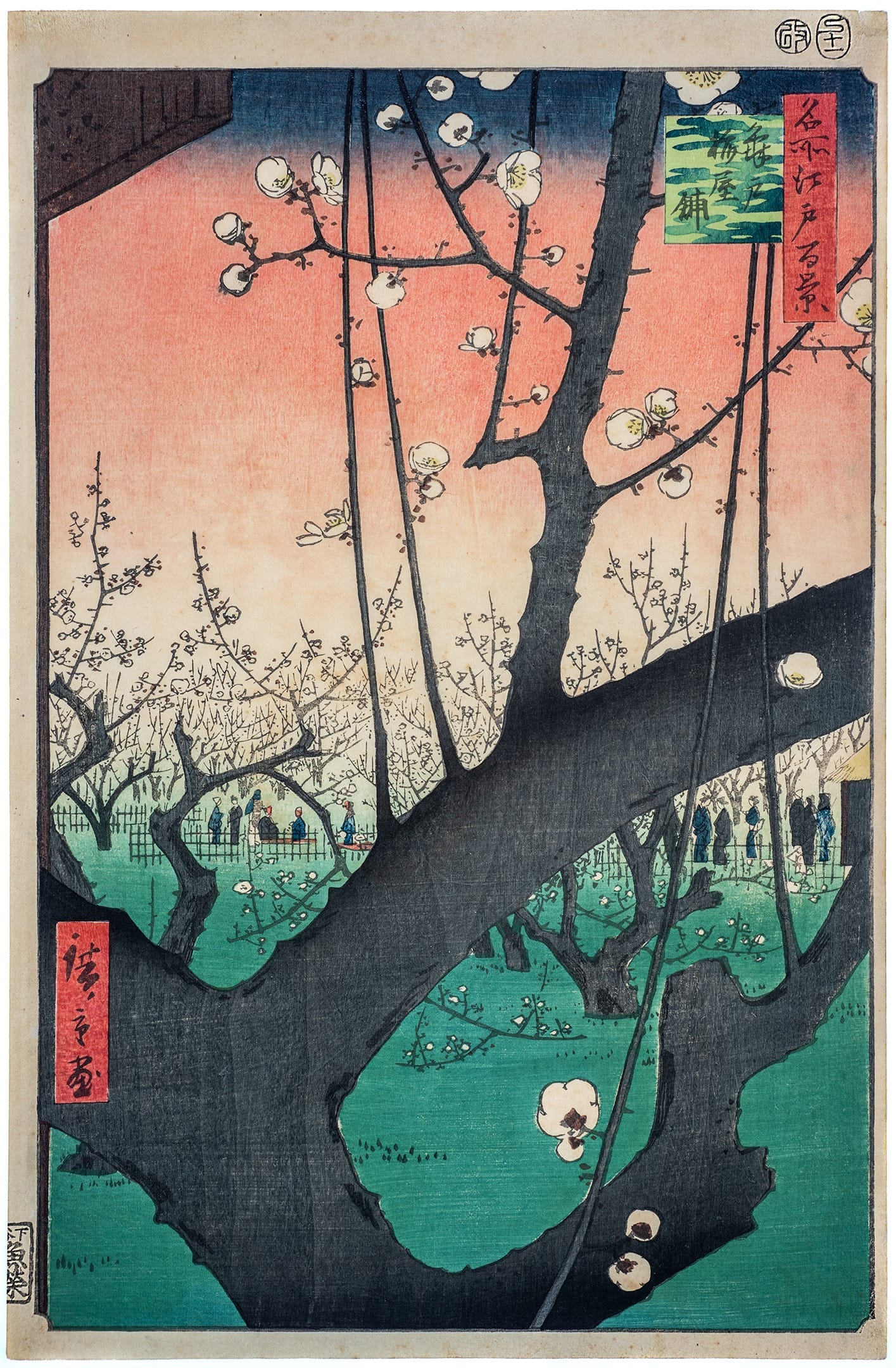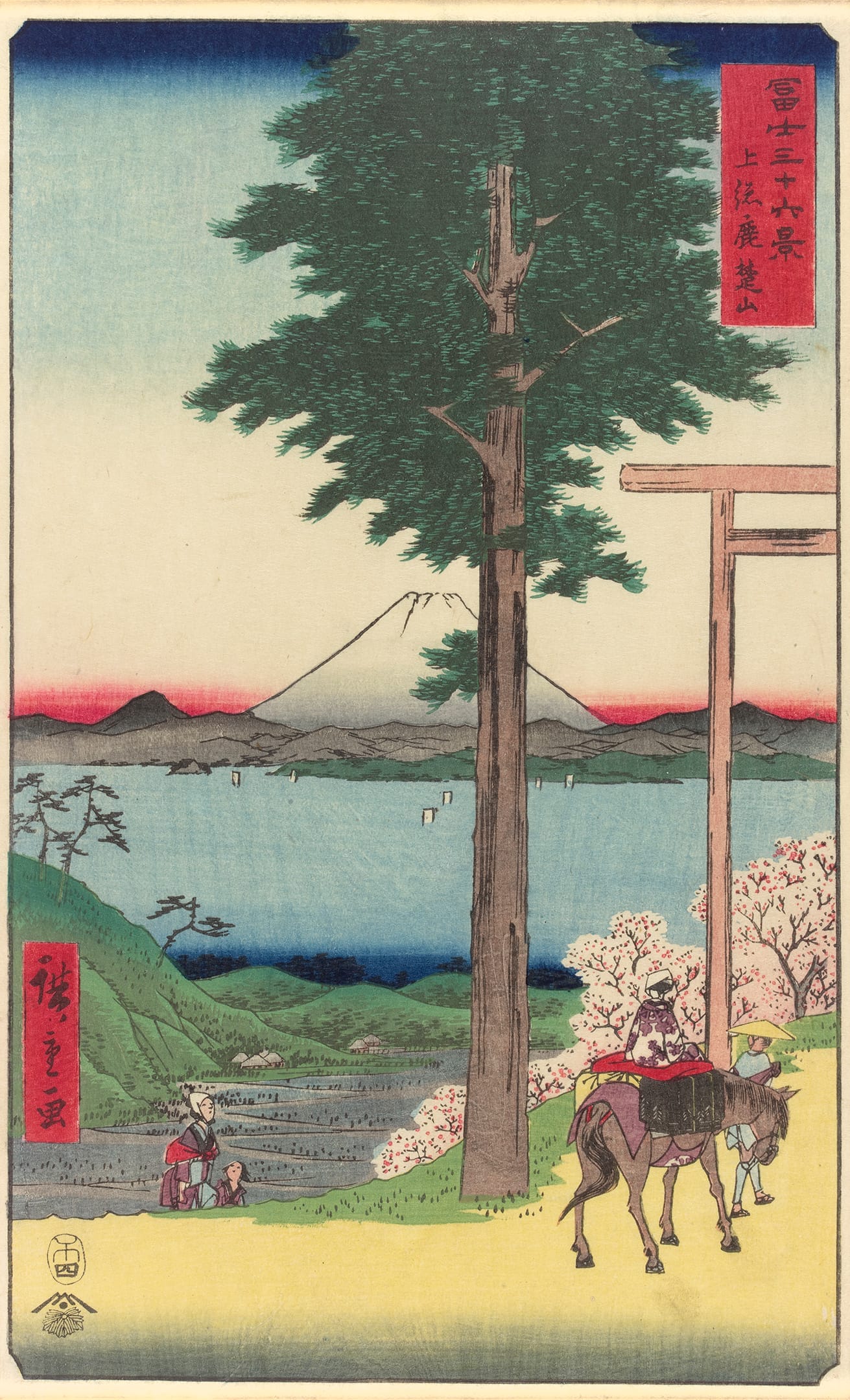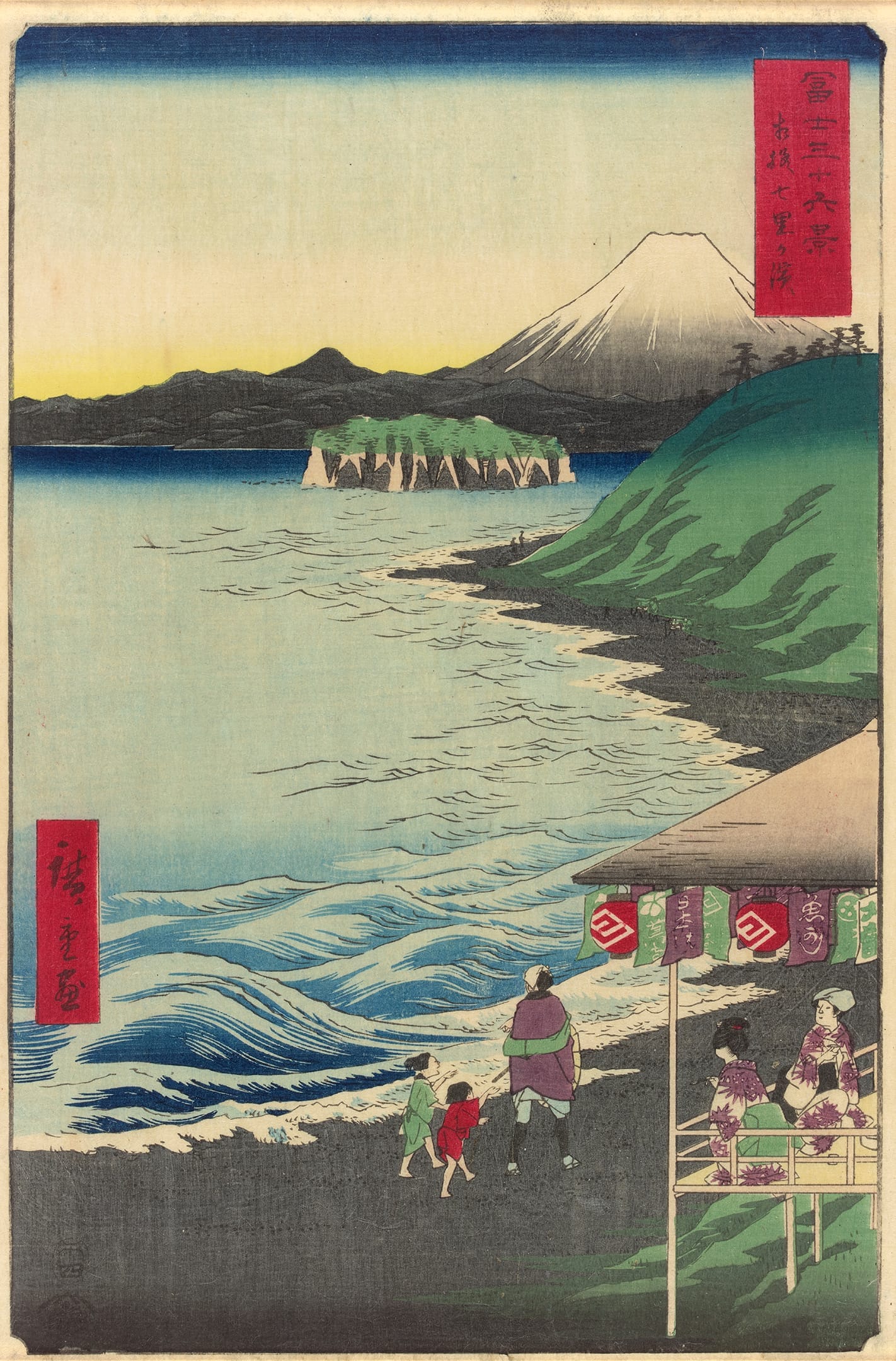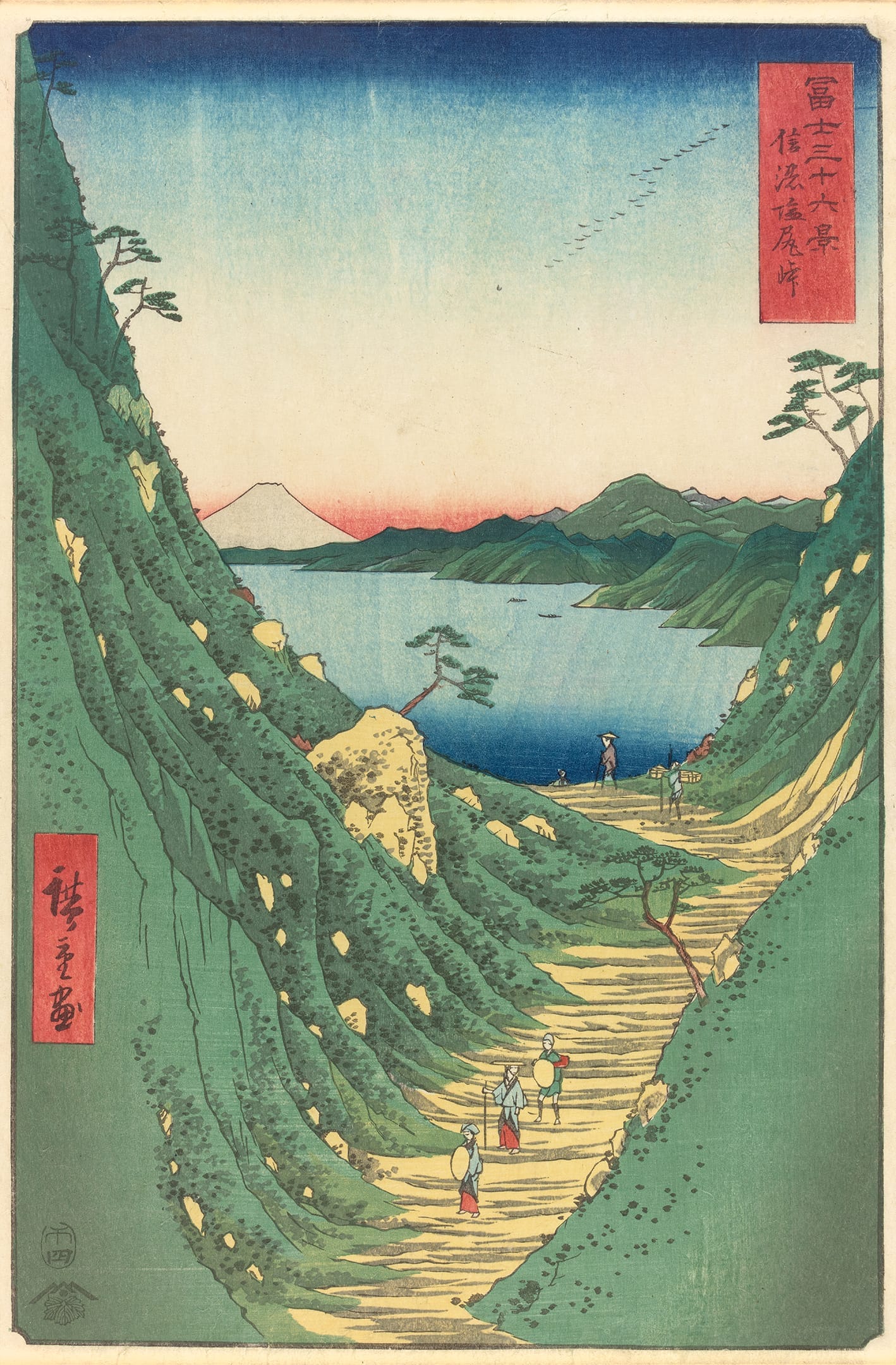Hiroshige (1797–1858) based his views on a characteristic compositional model in which one element, in this case the tops of two trees in the bottom right, serve as a point of reference to create an effect of depth. In the distance on the right, Mount Fuji symbolically takes the place of the vanishing point. Between the two, a flat green expanse scattered with figures devoid of relief and trees with barely suggested shadows represents the hill, which breaks off in a curving line addressed with the "fukibokashi" technique of subtle gradations of ink to give the landscape an atmospheric and poetic character. At the top, the same technique is used for the sky, crowned by an almost abstract band of blue ink. Introduced into Japan by the Dutch in 1829, Prussian (or “Berlin”) blue was such a hallmark of the artist’s style that he was even known as “Blue Hiroshige”.
